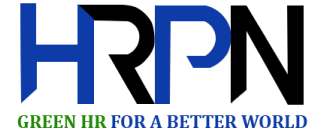In the modern HR landscape, People Analytics has become a critical function for driving strategic decision-making and improving organizational performance. But what exactly is People Analytics? What do People Analysts do? And what skills are needed to excel in this field? This blog aims to answer these questions and provide insights into the growing importance of People Analytics in HR.
What is People Analytics?
People Analytics, also known as HR Analytics or Talent Analytics, involves the use of data analysis techniques to understand and improve various aspects of human resource management. It leverages data to gain insights into workforce trends, employee behavior, and organizational outcomes. By analyzing data from various HR systems, such as recruitment, performance management, and employee engagement, People Analytics helps organizations make data-driven decisions to optimize their HR strategies.
What Do People Analysts Do?
People Analysts play a crucial role in transforming HR data into actionable insights. Their responsibilities include:
- Data Collection and Management: Gathering data from multiple HR systems and ensuring its accuracy and completeness.
- Data Analysis: Applying statistical and analytical techniques to interpret HR data and identify trends, patterns, and correlations.
- Reporting and Visualization: Creating reports and visualizations to communicate findings to HR leaders and other stakeholders.
- Predictive Analytics: Using historical data to predict future workforce trends and outcomes, such as employee turnover and performance.
- Strategic Recommendations: Providing actionable insights and recommendations to improve HR practices and support business objectives.
In 2023, the demand for People Analysts and related roles has surged, with LinkedIn identifying HR Analytics Manager as one of the top 25 fastest-growing jobs in the U.S. This growth highlights the increasing recognition of the value that People Analytics brings to organizations.
Essential Skills for People Analytics
To excel in People Analytics, professionals need a diverse set of skills that combine HR knowledge with analytical expertise. Here are the key skills needed for success in this field:
Business Acumen
Understanding the HR Domain
A deep understanding of HR functions, processes, and how they interconnect is essential. This knowledge allows People Analysts to contextualize data within the scope of HR activities, making their analysis more relevant and actionable.
Example: Analyzing employee turnover rates and linking high turnover to issues like inadequate onboarding or lack of career development opportunities.
Connecting Work to Outcomes
Articulating how analytical work connects to business outcomes is crucial. People Analysts need to understand the bigger picture and the impact of their analysis on organizational goals.
Example: Demonstrating how a small increase in training investment leads to significant improvements in employee performance and business growth.
Analytical Skills
Data Wrangling
Cleaning and organizing raw data into a usable format is a fundamental skill. Proficiency in tools like Excel and SQL is essential for ensuring data accuracy and readiness for analysis.
Example: Using SQL to clean and merge data from various HR systems to create a comprehensive dataset for analyzing employee performance trends.
Statistics and Regression Analysis
A solid grasp of statistical methods, including linear and logistic regression, enables People Analysts to uncover patterns and relationships within the data.
Example: Applying regression analysis to predict future turnover based on factors such as job satisfaction, salary, and tenure.
Storytelling
Clear and Concise Communication
Translating data insights into a compelling narrative that resonates with the audience is paramount. Effective storytelling makes data not just understandable but impactful.
Example: Presenting a narrative that links data on employee well-being to increased productivity and reduced turnover, illustrating the business case for investing in wellness programs.
Answering Business Questions
Ensuring that analysis directly answers specific business questions keeps the audience engaged and demonstrates the practical value of People Analytics.
Example: Addressing the question, “What impact does remote work have on employee productivity?” by analyzing data and providing evidence-based recommendations.
Consulting
Asking the Right Questions
Understanding core business challenges and formulating questions that provide insights to address these challenges is a key consulting skill.
Example: Asking, “Which factors most significantly impact employee engagement scores?” to reveal key areas for improvement.
Challenging Viewpoints
Challenging existing viewpoints with data-driven insights requires assertiveness and diplomacy. This skill helps drive change within the organization.
Example: Presenting data that shows the inefficacy of a rigid work schedule and proposing a flexible working model based on evidence of increased productivity and employee satisfaction.
Visualization
Creating Impactful Visuals
Transforming complex data sets into easy-to-understand charts and graphs is crucial for effective communication. Proficiency in visualization tools like Tableau is essential.
Example: Using Tableau to create an interactive dashboard that tracks key HR metrics like engagement, turnover, and diversity.
Design Thinking
Applying a user-centric approach to problem-solving involves understanding the needs of end-users (such as management) and designing practical solutions.
Example: Developing a personalized employee engagement survey based on feedback from different departments.
Project Management
Roadmaps and Prioritization
Creating roadmaps and prioritizing tasks helps in managing resources efficiently and ensuring timely completion of critical projects.
Example: Developing a roadmap for a talent analytics project that includes milestones, deadlines, and deliverables.
Agile Working Style
Adopting an agile working style allows for flexibility and responsiveness to changing business needs. Agile methodologies promote iterative progress, regular feedback, and continuous improvement.
Example: Implementing agile sprints for a project aimed at improving employee engagement, allowing for iterative testing and refinement based on ongoing feedback.
Conclusion
People Analytics is a vital function in modern HR, offering valuable insights that drive strategic decision-making and improve organizational performance. By understanding the role of People Analysts and mastering the essential skills, HR professionals can effectively leverage People Analytics to support their organizations.
Blog by: Kendra Davis-Roberts, MPS People Analytics Strategist and owner of KDR Analytics, a people analytics consulting firm





